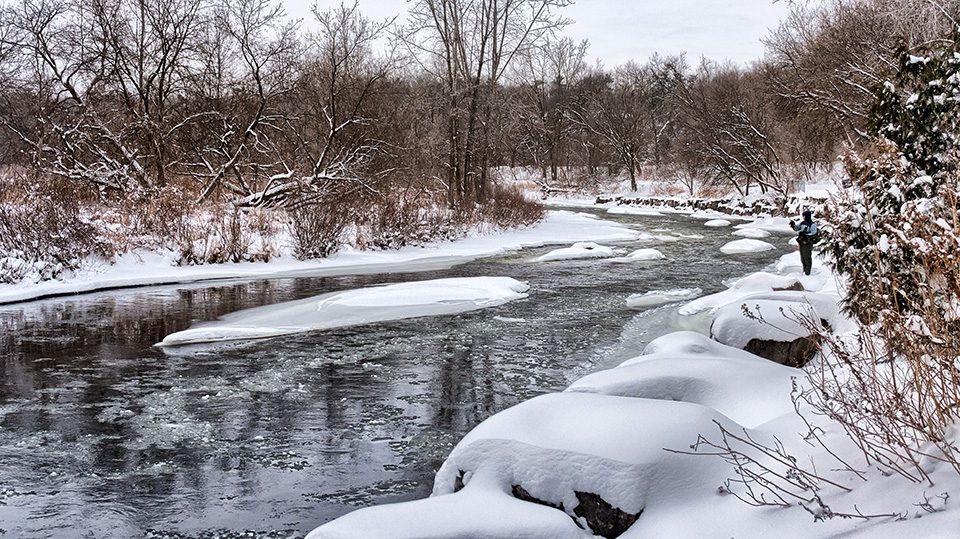Regardless of the species, extreme water temperatures—hot or cold—are stressors that can reduce the chance of survival when catch-and-release fishing. With February bringing some of the coldest fronts of the year across the continent, here is some science gleaned from the non-profit Keep Fish Wet to help you best handle fish you plan to release.
In a blog post, Sascha Clark Danylchuk gave some tips and observations. Here they are along with some of our thoughts on how this affects anglers.
Falling Temps
Fish are cold-blooded. As water temperatures decrease to the lower end of their comfort range, so do fishes’ metabolisms. Their ability to swim, feed, digest and avoid predators all decrease. Fish are more sluggish and feed less when water temps reach the lower end of their tolerance rage.
Whether its seatrout on the coast, bass in a reservoir or trout in a river, cold fish seek out warm-water refuge and sometimes aggregate where the temperature is more comfortable. This could be deeper pockets in a river, stream or coastal bay, or it could be up sun-warmed creeks and canals on the coast.
Even when they’re cold, catching can be easy when fish are piled up. Take care to release them back to the thermal refuge where you found them.
Reduced Forage
Fish feed up ahead of winter to pack on fat that will carry them through to spring. With reduced ability to feed and fewer foraging opportunities, these fat reserves are energy that depletes as winter progresses.
Energy expended during the fight or to heal a hook wound or replace slime coating can affect a fish’s ability to survive. Consider gearing up to reduce fight time and using barbless hooks during winter to give released fish the best chance of survival.
Pay Attention to the Fish
Energy-depleted fish combined with less forage creates a situation in which fish must feed opportunistically to survive. Pay attention to the fish you catch. If they look skinny or unhealthy, go fish somewhere else.
Lessons from Ice Fishing
Even if you’re not ice fishing, ice fishing studies reveal some other factors worth considering when fishing at the lower end of the temperature tolerance range for a given species. Stress responses decrease in intensity with lower water temperatures, which is good for catch-and-release situations; however, those stress responses can also be prolonged or delayed. Just because your fish swam away, doesn’t mean it’s OK.
One last item to consider is air exposure, and this is more relevant when it’s very cold outside. “If the guides on your rod are freezing up, consider how delicate gill tissue might respond to air exposure,” wrote Danylchuk.
To read the entire blog post, see https://www.keepfishwet.org.
